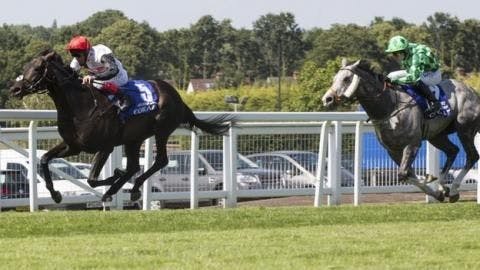Juddmonte International clash an example U.S. would be wise to emulate more often

The about 1 5/16-mile fixture features a clash between the undefeated, middle-distance star Golden Horn, winner of the Dante (G2), Derby (G1) and Eclipse (G1), and Gleneagles, who cemented his status as the top three-year-old miler in Europe with scores in the 2000 Guineas (G1), Irish 2000 Guineas (G1), and St James's Palace (G1).
On the other hand, there is also the possibility the International could turn out to be not so competitive. After all, Golden Horn is a proven commodity over 10 furlongs, and York, while Gleneagles has not yet had the opportunity to race beyond a mile.
No matter. The fact these two are even meeting at all is a cause for celebration and a reminder that such acts of sportsmanship have become increasingly rare on this side of the pond.
Granted, Gleneagles was re-routed to York only last week when soft conditions seemed assured for Sunday's Prix Jacques le Marois (G1) over a mile at Deauville. However, "the lads" at Coolmore certainly had a number of other options coming up that didn't have to include Gleneagles facing Golden Horn. They're taking the chance, and the sport will be better for it.
The presence of Time Test and The Grey Gatsby must also be noted. The three-year-old Time Test could not have looked more impressive when taking the 1 1/4-mile Tercentenary (G3) at Royal Ascot by more than three lengths, and he might yet prove to be one of the top runners in the crop.
The Grey Gatsby, second in this event last year, couldn't keep up with Golden Horn in the Eclipse, but the four-year-old, hard-knocker's entry at least keeps the International from being only a nominal battle between generations.
Three-year-old, middle-distance stars in England and Ireland are virtually required to run against older horses from July onwards. The same thing for milers after Royal Ascot. (France is its own peculiar animal. Middle-distance three-year-olds often go from the French Derby [G1] or Grand Prix de Paris [G1] straight to the age-restricted Prix Niel [G2] Arc trial, while milers tend to meet older horses earlier.)
Unlike what occurs on the British Isles, American racing authorities have done their very best over the past few decades to actively discourage the best three-year-olds from running in open company before the Breeders' Cup. For example, pushing the Travers (G1) back to the last weekend in August and moving the Woodward (G1) to the Saratoga meet has all but eliminated the latter from being the first clash between generations it generally once was (Rachel Alexandra being a recent exception that proves the rule).
The Jockey Club Gold Cup (G1) still attracts, and is won by, many good three-year-olds, but is now in competition with races like the Pennsylvania Derby (G2), which offers a similar purse and the opportunity to run a furlong shorter against straight three-year-olds.
The growing number of three-year-old stakes, particularly in the summer and fall, is a disincentive to race the best three-year-olds against each other and against older horses. Meanwhile, the disproportionate expenditure in these restricted events can be a disincentive to race horses at all beyond the age of three.
The Breeders' Cup Classic (G1) is undoubtedly a great stage on which the best of all generations can meet, but would it be that ghastly if it weren't the only time it occurs during the year? By putting all of its eggs in one basket, or in a variety of little ones, the sport seemingly has fewer big showdowns than it once had.
(Eclipse Stakes photo courtesy of bbc.com)
ADVERTISEMENT



